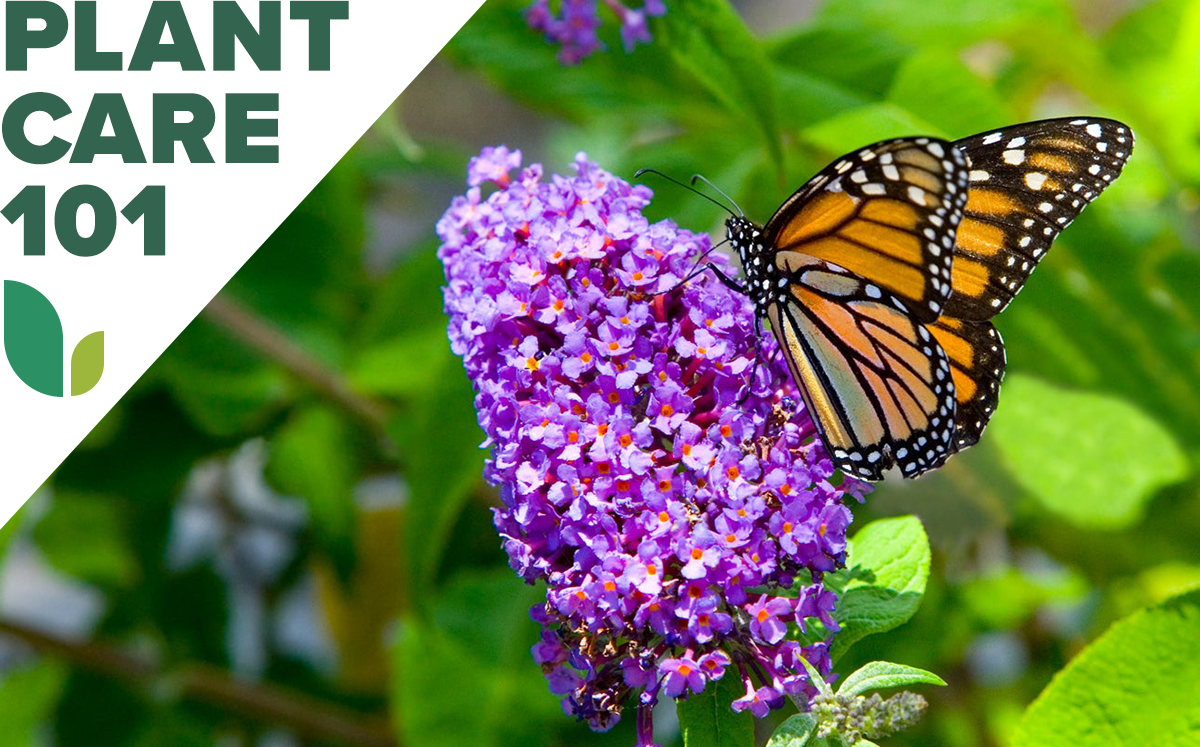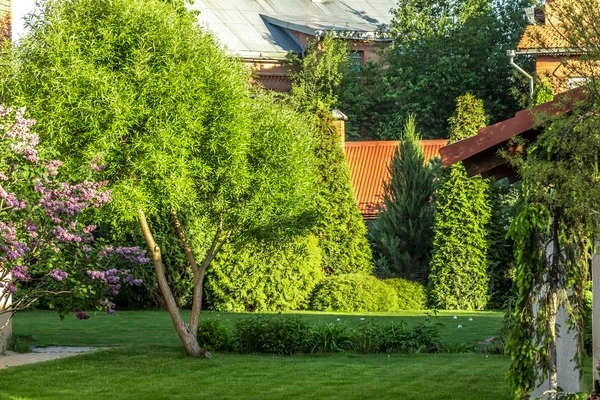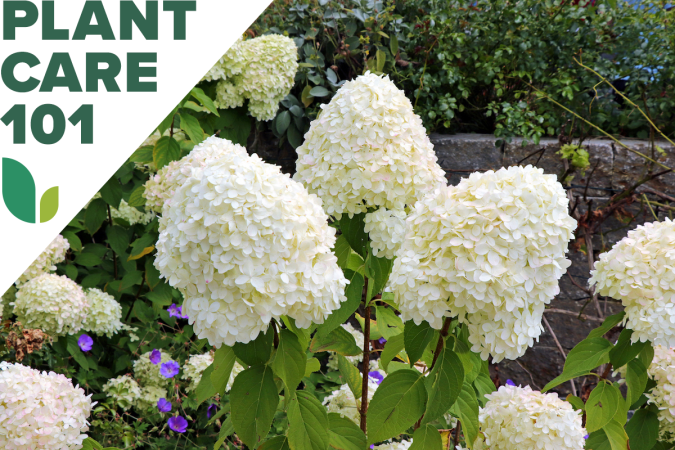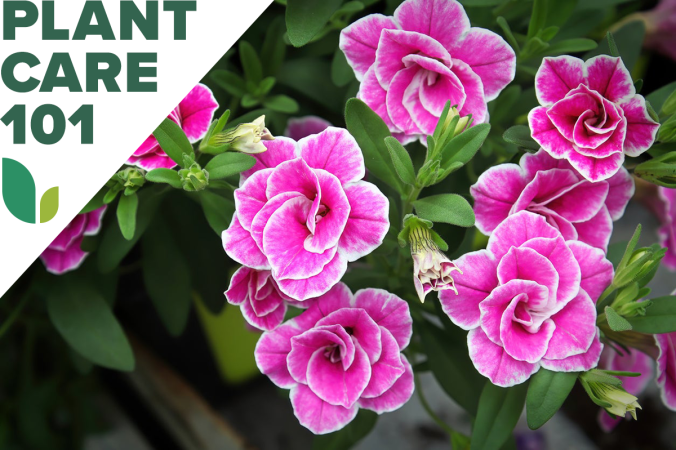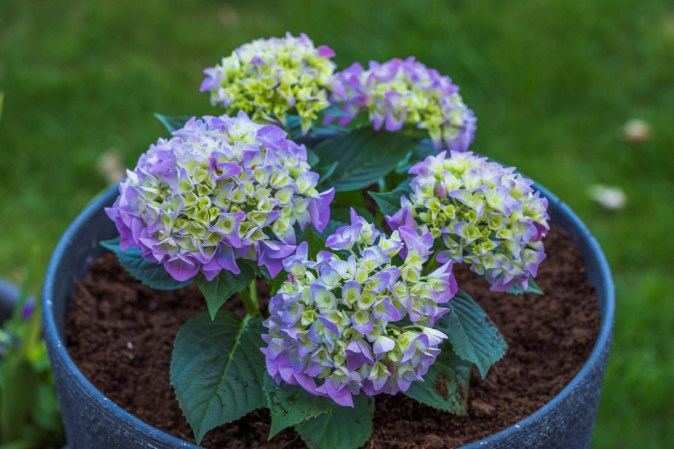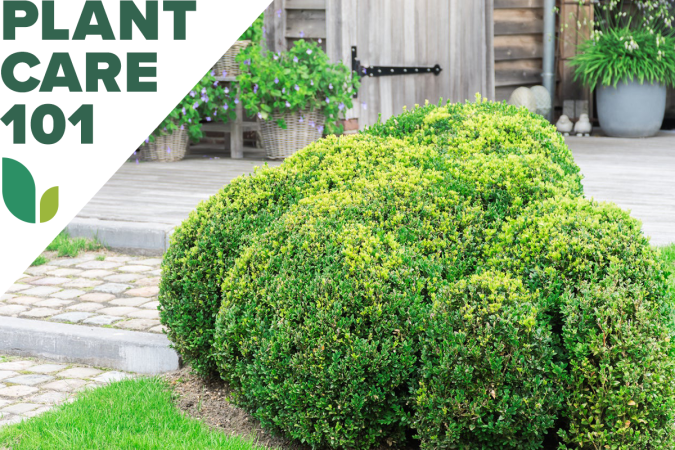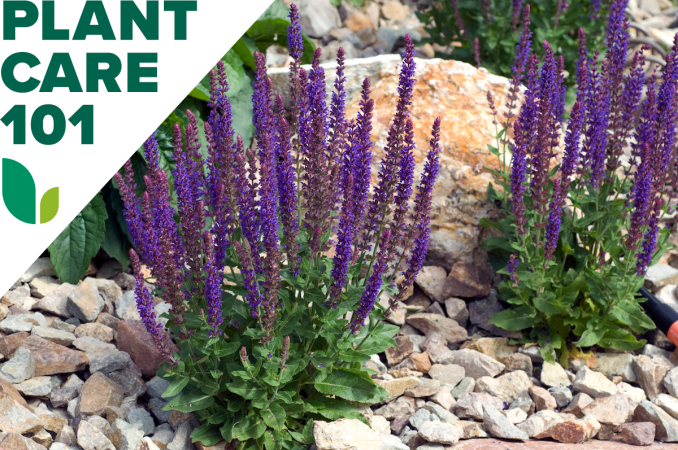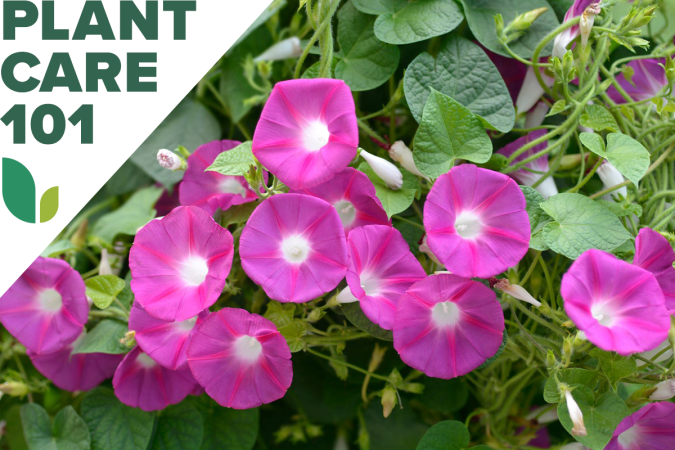We may earn revenue from the products available on this page and participate in affiliate programs. Learn More ›
Butterfly bushes (Buddleia davidii) are prized for their showy cones of tiny fragrant flowers, which attract butterflies and other pollinators while being deer-resistant. This deciduous shrub is as popular for its ability to survive harsh conditions as it is for its beauty. Plus, butterfly bush care is easy.
However, this long-lived bush is not native to North America. Because it’s aggressive, it can be detrimental to wildlife; this invasive plant outgrows native species that birds and pollinators rely on. Therefore, many experts recommend that gardeners plant native butterfly garden plants instead.
RELATED: 7 Things to Know When Growing a Wildflower Garden
Growing Butterfly Bush at a Glance
Common Name: Butterfly bush, butterfly plant, summer lilac
Scientific Name: Buddleia davidii
Hardiness Zone: Zones 5 through 9
Soil: Moist, well-drained soil; pH 6.0 to 7.0
Light: Full sun
Water: Medium moisture; ½ inch of water per week; does not tolerate wet feet or drought
Food: Fertilizer not required; compost optional
Propagation: By seed or rooting branches
Safety: Nontoxic; not edible
Butterfly Bush Characteristics
The butterfly bush is a large, attractive shrub that produces cones of small star-shaped aromatic white, purple, blue, pink, yellow, orange, or red flowers. Jagged leaves 5-10 inches in length provide a backdrop for colorful blooms, which either droop or spike upwards at the end of branches from midsummer to early fall.
Native from central China to Tibet, it is a cold-hardy deciduous shrub. It grows at a fast rate of up to two feet per year, and it can grow into a butterfly tree as high as 15 feet in some climates. It also spreads as an invasive plant, crowding out more beneficial native plants pollinators need for survival. Although one stage of the butterfly bush’s life cycle provides nectar for butterflies and hummingbirds, it is not a host plant for pollinators, nor is it a food source for caterpillars.
Some newer, less-invasive varieties have been introduced, but because they still produce seeds (albeit fewer than the typical 40,000 on a single flower spike), they remain a non-native invasive species.
Recommended Butterfly Bush Varieties
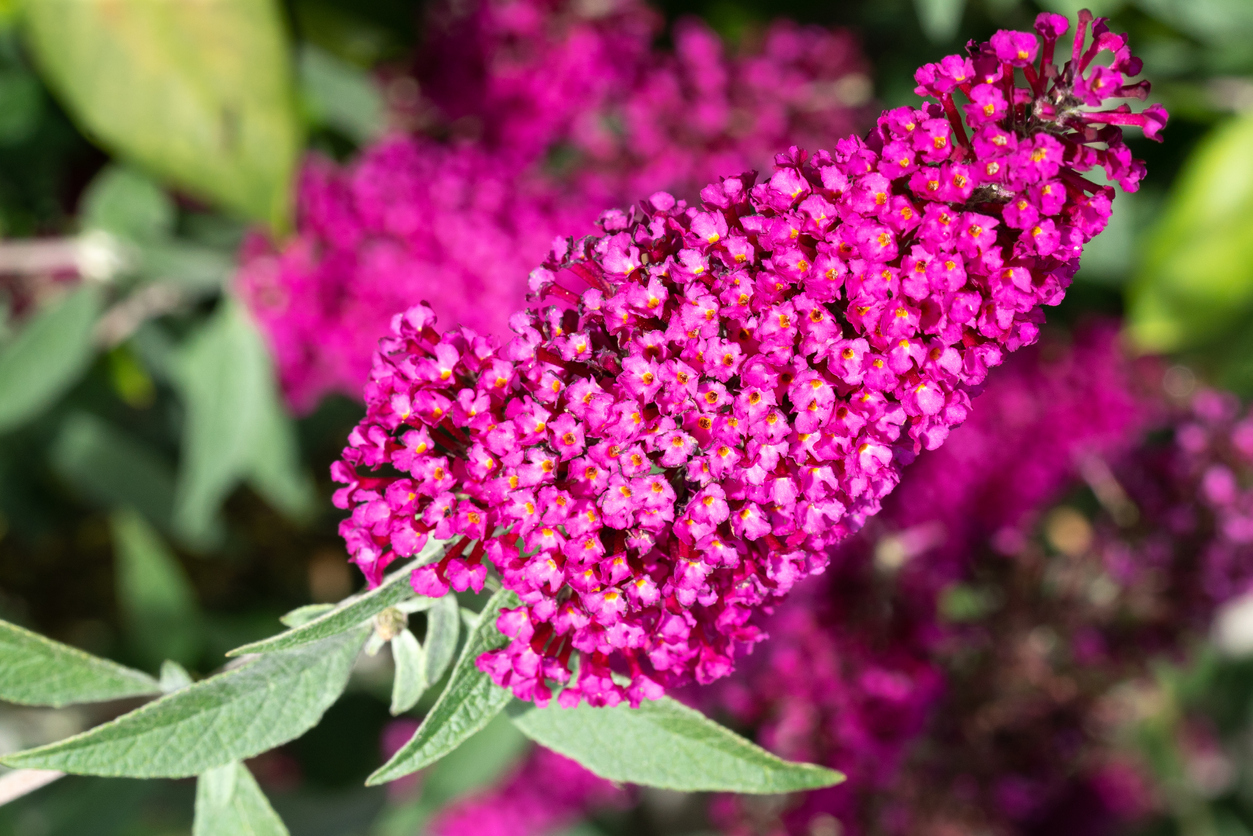
There are more than 160 butterfly bush varieties in almost every color of the rainbow. To curtail their invasive tendencies, it’s recommended to plant one of the newer, non-seeding varieties. Here a few popular ones:
- ‘Purple Haze’ is a sterile butterfly bush variety with a horizontal growth pattern, making it a good ground cover. It grows only 2 to 3 feet tall and 3 feet wide.
- ‘Black Knight’ butterfly bush is dark purple—so dark, it’s nearly black. Graceful and airy with deep violet blooms, it can reach 6 to 8 feet tall and 3 feet wide.
- ‘Blue Chip’ is a borderline dwarf butterfly bush variety that grows 2 to 2 ½ feet tall and wide. This hybrid’s blueish-purple flowers bloom for a long time without deadheading, and it’s non-invasive.
- ‘Miss Molly’ butterfly bush is the reddest variety, with intensely vibrant blooms. This petite 4- to 5-foot-tall plant thrives in hot climates. Because it’s non-invasive, it doesn’t require deadheading.
- ‘Inspired Pink’ is a tall bush (4 to 6 feet) with full-size blooms in a delicate pink shade with orange eyes. Because it does not seed, it’s less invasive.
- ‘Kaleidoscope’ butterfly bush is a bi-color plant with yellow blooms that transition to raspberry and finish with purple buds at the tips. These flowers have orange eyes, and the foliage is gray-green. It grows 6 to 8 feet tall and 5 to 7 feet wide. Not as cold-tolerant as some varieties, it’s hardy only to USDA Zone 6.
- ‘Tangerine Dream’ is a stunner with bright-orange-to-bronze blooms on gray-green foliage. Heat- and drought-tolerant, it grows 4 to 6 feet tall and wide.
- ‘Pugster White’ is a compact white shrub growing 2 feet tall by 2 feet wide. This hybrid features a profusion of large white fragrant blooms and is non-invasive.
RELATED: How to Grow Zinnias
Planting Butterfly Bush
Planting a butterfly bush in a suitable location and with careful attention to the plant’s needs will minimize care and problems.
When is the best time to plant butterfly bushes?
Spring is the best time to plant butterfly bushes, although fall planting is also acceptable—as long as it’s done before the first frost to give them time to develop their root system before colder temperatures arrive. They should not be planted during the heat of summer unless they have shade and additional watering.
Where can butterfly bushes grow?
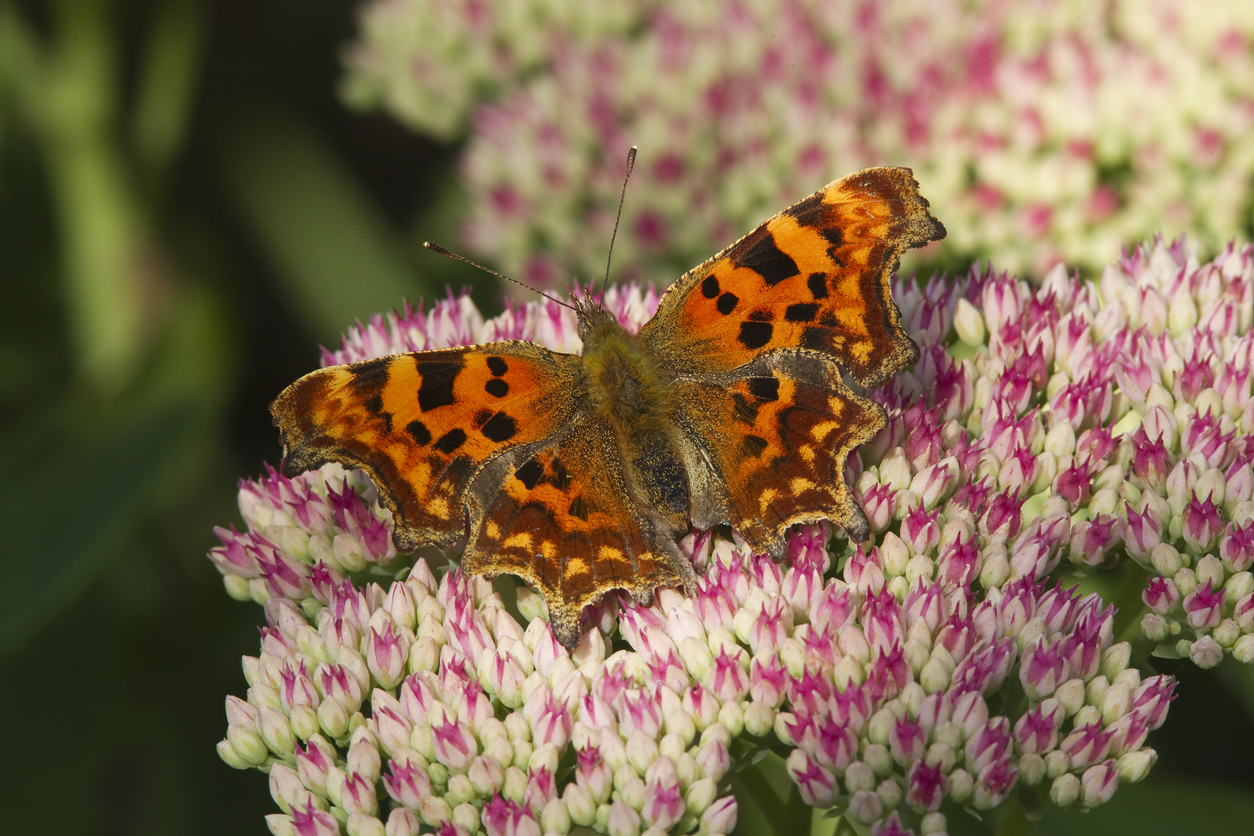
A butterfly bush grows best in a place with full sun and well-draining soil. If planted in shade, they tend to grow sparsely, with fewer flowers that are lighter in color. Be sure to choose a spot that will accommodate their large size. Because they’re generally tolerant of pollution, butterfly bushes can be grown in urban areas and along roadsides.
Different varieties have varying levels of cold hardiness and drought tolerance. Most can tolerate poor or alkaline soil, but not wet soil.
How do you plant butterfly bushes?
Most gardeners plant small butterfly bushes purchased at garden centers, rather than starting them by seed. For best results, follow these steps:
- Dig a hole twice as wide as the container.
- Mix compost into the soil.
- Plant so the root ball is at ground level.
- Cover with soil and water thoroughly.
RELATED: Hardiness Zones 101: What All Home Gardeners Need to Know
Watering Butterfly Bushes
Butterfly bushes should be watered thoroughly during their first growing season to help transplants establish their root systems. Once established, only water a butterfly bush during extreme heat or prolonged dry spells. Although they are considered drought-resistant, they prefer medium moisture. Water slowly and deeply to allow the soil to absorb water deep in the root zone, but don’t water so frequently that the soil gets soggy. A half-inch of water per week is sufficient.
Fertilizing Butterfly Bushes
Butterfly bushes have little to no requirement for fertilizing. The best option is to add a thin layer of compost in the spring, although a slow-release general fertilizer applied in the spring shouldn’t hurt. However, too much can lead to fertilizer burn or promote foliage growth rather than flower production.
An inch or two of mulch can benefit the shrub by adding nutrients to the soil and helping to retain moisture and control weeds.
Pruning Butterfly Bushes
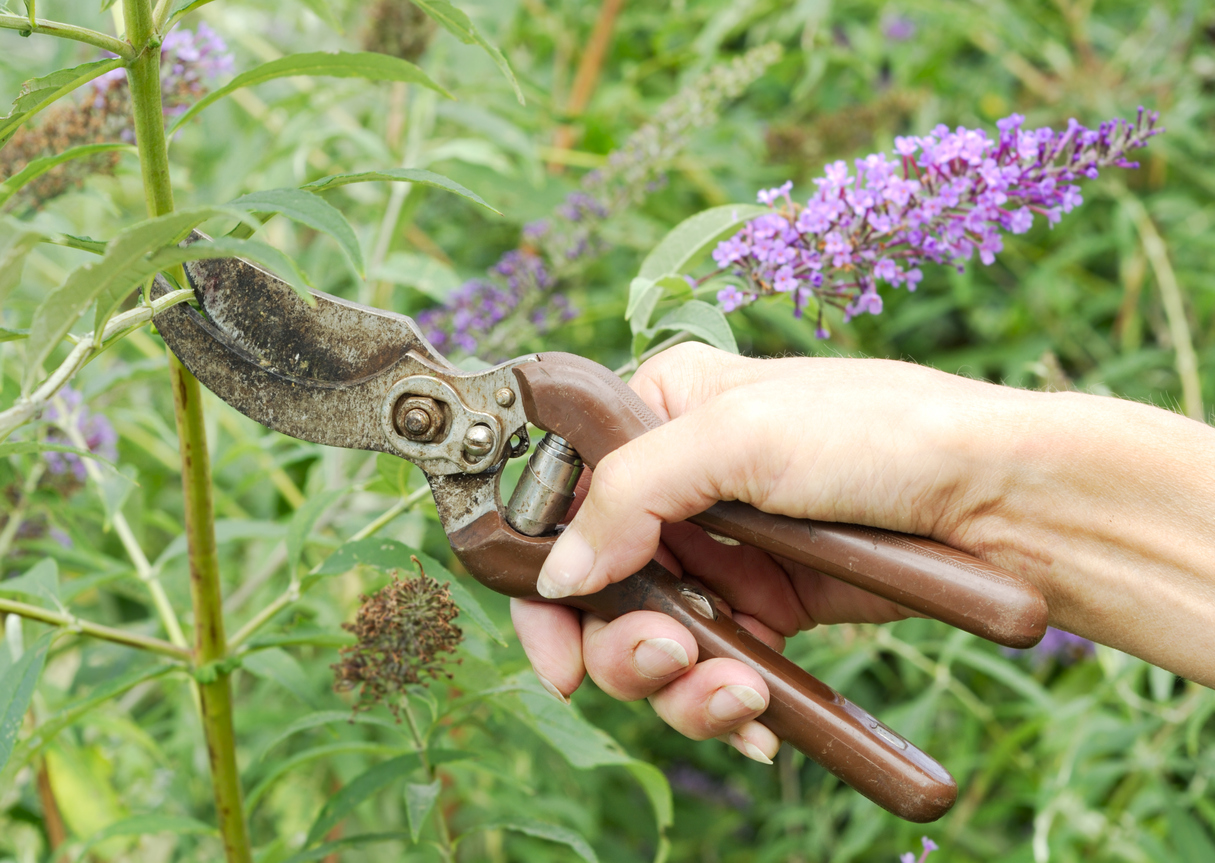
Other than deadheading, there’s usually little need to trim butterfly bushes. Removing spent blooms encourages more flowering and, for self-seeding varieties, slows the spread of the plant. If you want to know when to prune butterfly bushes, it depends on your climate and the size of the shrub, so consult your local extension agent. Smaller varieties may not need any pruning, but you may want to trim larger varieties to keep them in check.
Similarly, if you want to know when to cut back butterfly bushes, it again depends on your climate and the size of the shrub. In mild climates, you may want to prune the bushes in late fall or early spring to maintain their shape, but in colder climates, many gardeners treat them as perennials by cutting back to the ground in late winter or early spring. This can also encourage a bushier butterfly plant and stimulate flower production, since flowers grow on new wood.
Prune all dead, damaged, or diseased branches as with any shrub or tree.
Propagating Butterfly Bushes
Although most gardeners buy butterfly bush plants from local garden centers, it can be planted from seeds (which remain viable for up to five years) or propagated by stem cuttings. To grow butterfly bushes from cuttings, choose a branch that is 3 to 4 inches long. Strip the lower leaves and dip the cut end in rooting hormone powder before placing it in potting soil. Water it regularly.
Butterfly bushes can also be propagated by division, which is best done in the spring or fall. To do so, dig up the plant and separate a section all the way down to the roots. Plant it in a new spot and replant the mother plant.
Note that butterfly bush spreads on its own by sending out roots that sprout seedlings.
Safety Considerations
Butterfly bushes are nontoxic to humans and animals, so they can safely be planted in areas with pets and children. There’s no evidence of butterfly bush toxicity to cows, horses, or other livestock either, but they are deer-resistant and are not known to attract dogs. Nevertheless, children should be discouraged from eating any part of the plant.
The biggest safety concern surrounding the butterfly bush is its invasiveness. Since it’s not endemic to North America, and because it’s not fully supportive of pollinators, its aggressiveness can be dangerous to native plants and the pollinators that rely on them.
RELATED: 10 Ways to Make Your Garden More Bee-Friendly
Potential Pests and Diseases
Butterfly bushes tend to be generally immune to most pests and diseases. However, under stress, they can succumb to spider mites. Spider mites are detected by small spots on the leaves, which turn gray or bronze, and the appearance of small webs.
Particularly in the South, nematodes may also be a problem, causing damage to the leaves with visible yellow patches. There is no treatment for nematodes other than the removal of affected plants. More infrequent pests can include Japanese beetles, caterpillars, weevils, and mullein moths. Root rot, leaf spot and other fungal diseases can appear if a butterfly bush is overwatered.
Using pesticides on butterfly bushes is generally not recommended, since these plants attract pollinators, which could be harmed by them.
Preparing Butterfly Bush for Winter
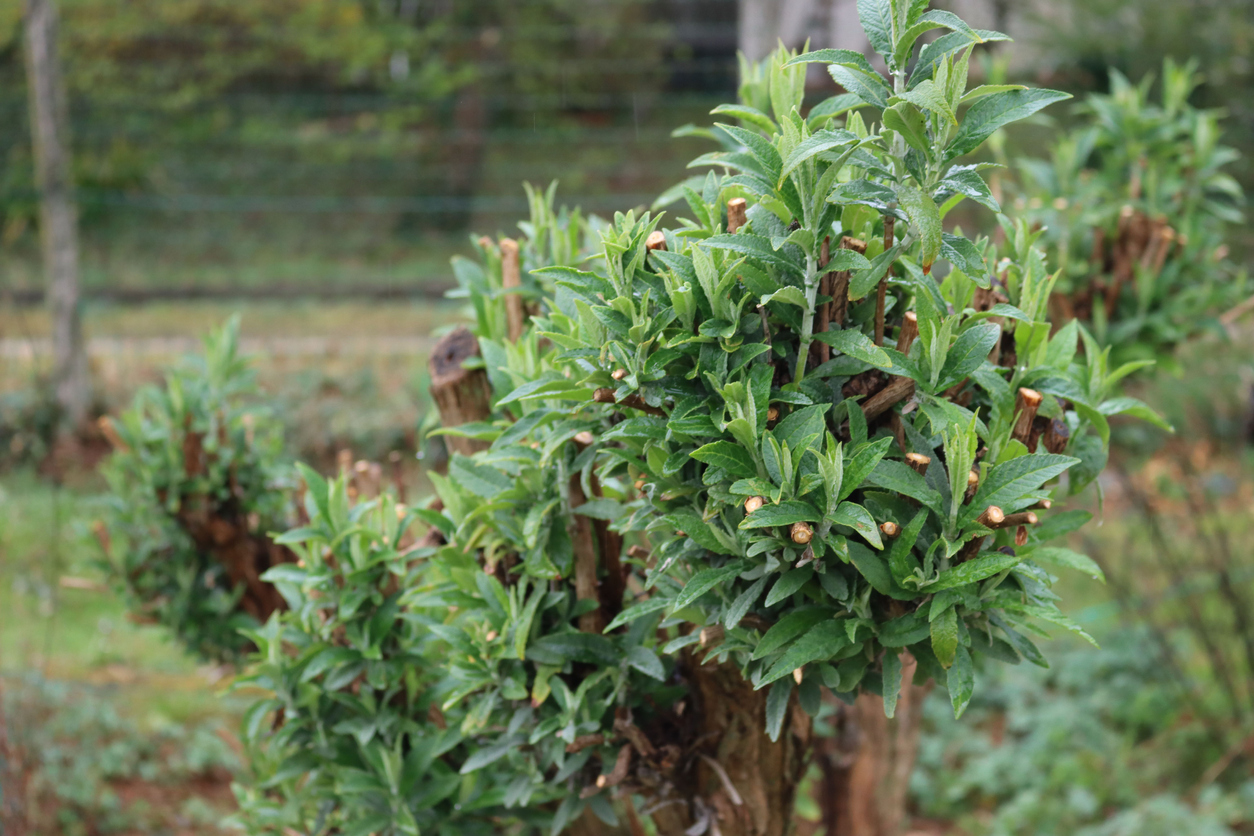
Typically, little winter prep is necessary for butterfly bushes. For varieties that self-seed, deadheading your butterfly bush is highly recommended to prevent it from spreading. In the fall, pruning for shape, size, or health (in the case of broken, dead, or diseased branches) is recommended.
When grown in an appropriate hardiness zone, butterfly bush will return in the spring, even if it’s been cut back to the ground in autumn. Two or three inches of mulch can protect the roots in colder climates.
Looking for more low-maintenance shrubs or flowering plants? Check out our articles on growing milkweed, low-maintenance ground covers, and trees and shrubs that thrive in containers.

